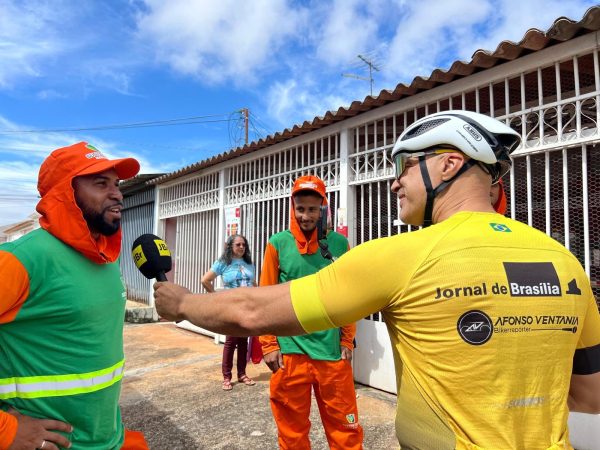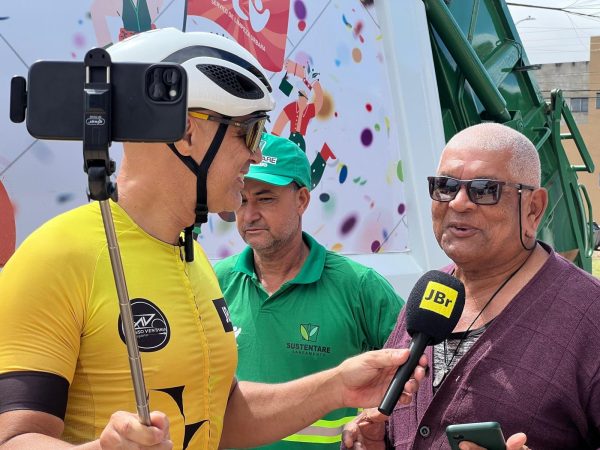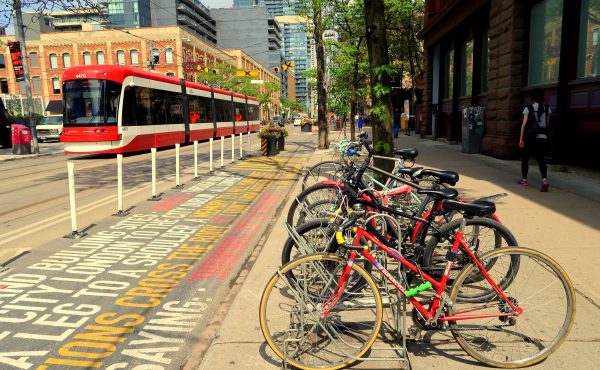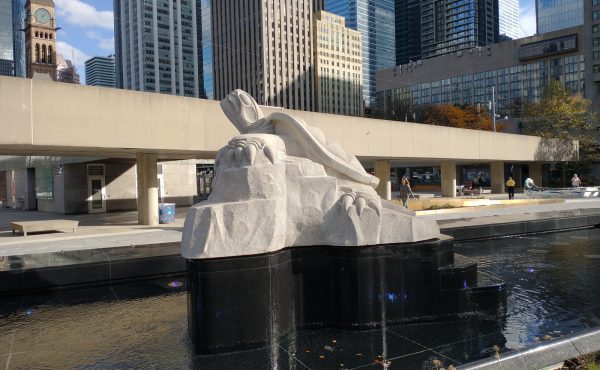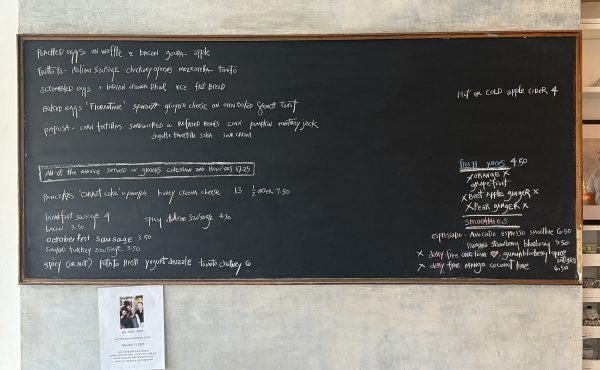As a young man, Afonso Ventania raced bikes competitively, but retired at 26 and decided to go into journalism. He spent several years covering sports and later national politics in Brasilia, Brazil’s capital, reporting stories that irritated powerful figures in the country’s senate.
One day in 2016, while he was riding through the city, a police cruiser pulled up beside him. One of the cops leaned out the window and said to Ventania, “Afonso, you should be careful.”
That warning contained enough menace that he fled the country for almost a year, spending time in both the U.S. and Canada. While attending the International Transport Forum summit held last month in Leipzig, Germany, he told Spacing that when he returned home, “I talked to my wife [and said], ‘I’m not into that anymore. I have to change my life. I have to go for another thing.'”
He almost quit journalism, but instead decided to merge his work and his passion, setting himself up as a mobile journalist; he now works for Brasilia’s second largest newspaper, Jornal de Brasilia, one of the country’s largest dailies. For the past six years, he’s been riding the frequently dangerous streets of a congested city of three million, covering stories related to cycling and cycling infrastructure. “I created the `bike reporter,'” he says. “[I’m] just a guy who rides a bicycle, searching for stories and characters around the city, with the focus on mobility and transport and traffic.”
Ventania, however, has positioned himself as more than just a beat reporter. Thanks to the visibility of his coverage, he’s established a partnership with the local government to promote bike safety and safe driving, especially among the operators of the city’s thousands of municipal buses. Ventania’s work has led to an annual bike safety day, August 19th (now in its third year), as well as a uniquely experiential approach to safety training for the city’s 5,000 bus drivers.
Using facilities that belong to Brasilia’s various bus operators, he sets up a column of stationary bikes at the edge of a vehicle lane on a test track. The drivers — and, in one case, the municipality’s commissioner of transportation — would take their places on the bikes and begin to peddle while buses zoomed by at alarmingly close range, i.e., the conditions that prevail on many of Brasilia’s main streets. Then they’d repeat the experience, but this time with the buses driving beyond the legally required buffer of about two metres.
The commissioner, Ventania says with a chuckle, “was so scared.” “We record videos [of these training sessions] and they are broadcast on the TV systems in the bus company’s cafeterias and in courses that are taught throughout the year. The result is that accidents have reduced drastically, and most importantly, the relationship between bus drivers and cyclists has become much more human and collaborative, to the point that today, cyclists no longer fear for their lives in relation to buses.” “In many cases,” he adds, “they even protect us on the roads, escorting cyclists on more dangerous stretches.”
Ventania’s crusade to break down the hostility between the operators of large vehicles and cyclists, and replace it with empathy, offers up a striking contrast to the dominant narrative about bike infrastructure, which stresses physical separation as the critical pre-condition to safety.
Yet his reporting advocacy has also focused on Brasilia’s 800 miles of bike lanes, a network that is only about ten years old and was constructed to confront congestion and reduce speeding. “They are not that good, because we have no connections in some parts of it,” he says. “That’s one of my missions.” As part of his coverage, he draws attention to gaps in the network, or missed opportunities to link the patchwork of bike lanes to Brasilia’s transit network. “I think in in five to eight years, we’re going to have a nice bike lane system.”
In many ways, all of this stands in sharp contrast to the work taking place in bike-friendly cities like Paris or Montreal, where local governments have had the courage to not just add cycling infrastructure here and there but make it a centrepiece of wider efforts to make their cities less chronically car dependent.
Some of the Summit presenters in Leipzig last month also talked about the way this conversation is playing out in less prominent urban regions, where congestion and air pollution are literally choking the local economy.
For example, the World Bank has developed a digital cost-benefit analysis tool — Cycling Max — that estimates the rates of return on capital expenditures on cycling infrastructure as a means of calculating loans to cities in the Global South. The analysis aims to figure out how to “optimize” the road network, reduce vehicle emissions, and limit health care costs associated with accidents. Nicolas Peltier-Thiberge, the World Bank’s global director of transport, explained that the evaluation aims to assign dollar values to the health, climate and safety benefits of cycling infrastructure. “The results are absolutely outstanding,” he said. “We have economic rates of return of 44%.”
As I wrote last month, Toronto’s conversation about cycling infrastructure tends to avoid this kind of approach, for all sorts of perfectly valid reasons. But in the face of existential threats to our bike lanes from the Ford government, and the generally hapless response from Mayor Olivia Chow’s administration, there is an open question in my mind about whether we’re using all the rhetorical tools at our disposal to fight back.
Afonso Ventania’s strikingly innovative journalism also offers a reminder about how to tackle the upstream problem, which is the unresolved hostility towards cyclists and cycling infrastructure that has emboldened Ford and his minions to (once again) turn bike lanes into a capital-P political target.
Ventania told me his next goal is to approach private truck fleets, also with the goal of providing their drivers with similar training he has promoted for bus drivers (an idea that should resonate here, given recent tragedies involving reckless dump and garbage truck drivers killing cyclists and pedestrians). At the same time, Ventania is pushing Brasilia’s municipal government to step up its road safety media and educational campaigns to push the city’s two million drivers to pay more attention to cyclists as a means of reducing accidents.
In a moment when our cycling politics feels a lot more like Brasilia’s than Montreal’s, it strikes me that we could learn a lot from Afonso Ventania’s optimistic approach in Toronto’s frustrating and, so far, fruitless, campaign to fend off the barbarians at the gates of Queen’s Park.

